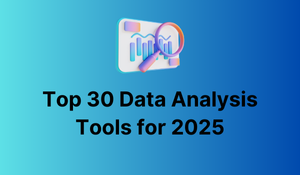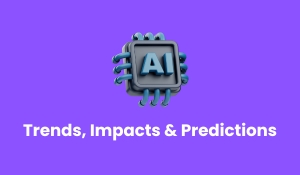
In this globalized era, digital experiences have more technology options than ever before, and also the competition among them is very high. The business success mostly depends on the insights and data. Companies around all sectors have been utilizing facts in digital analytics for the services of data. Adobe Analytics is considered the best tool in the market of digital analytics which was at a very staggering space in the last few years. It will help you to analyze the data and offer insights that can be helpful to drive the business.
The Gologica Adobe Analytics tool is mainly designed for professionals and beginners who are looking for a career on a master analytics basis.
What is meant by Adobe Analytics?
Adobe Analytics is also known as a solution for industry-leading analytics that enables it to become a good team for data-driven. It is used to capture data from every device that is connected to the web and to extract insights. Probably, you can also onboard offline data to originate in capturing the data online. Adobe analysts all over the world use Adobe analytics tools to discover data insights. The APIs in Adobe Analytics give various ways to integrate customer data into the process of business. Anyone can analyze, gather, and report on everything that is related to customers in doing web analytics through Adobe Analytics.
Why to use Adobe Analytics?
The term Adobe Analytics is referred to as the industry leader among analytics solutions which can enable the candidate to become data-driven. It can also allow the user to capture data or information from every device that is connected to the web to extract complete insights. The candidate also has the chance to onboard offline information originating from online data capture.
Analytics all over the world use Adobe Analytics tools to discover data insights for the business. The APIs in Adobe Analytics can offer innumerable methods to integrate customer information into the process of business. The candidate can analyze, gather, and report everything about the customers in doing through web analytics. It is one of the Adobe Experience Cloud parts.
Why to use Adobe Analytics?
One can easily expand the analytical skills if that person is familiar with Adobe Analytics. The new tools and features of Adobe Analytics will enrich you in knowledge-based analytics. One can easily reduce marketing silos, IT redundancies, ROI and drive efficiencies with Adobe Analytics.
What are the features of Adobe Analytics?
Adobe Analytics is considered the leader in Forrester Waves and Magic Quadrant for analytics. Let’s move right into the features of Adobe Analytics.
Multichannel data collection: Adobe Analytics can allow the candidate to capture data in the form of virtual from various sources like mobile devices, emails, web, client-server applications, and so on.
Tag Management: It is very easy to manage the tags by using Adobe Analytics to offer several tools to distribute and collect information across different digital channels.
Offline data integration: The candidate can integrate offline data easily.
Advanced Calculated Metrics: The advanced calculated metrics can be used to segment and create any of the reports for the user.
Advanced Segmentation: Advanced segmentation is used to uncover the difficult segments that drive the KPIs of the company.
Cross-device analytics: The cross-device analytics are used to understand the journey of a customer much better by unifying both the application’s web information/data as a single source.
Intelligent Alerts: The users can manage and create the alerts.
| Learn more information from the GoLogica “Adobe Analytics Training“ |
Anomaly detection: Statistical modeling and machine learning often allow the candidate to identify unexpected anomalies in the user’s information.
Third-party integration: With pre-built APIs and UI, one can do the integration part of the data connections by using third-party applications.
Shared Audiences: Based on the behavior of the user, one can easily manage and create seamless audience segments to the Adobe Experience Cloud in activating Cloud products.
So far, you have understood the significance of Adobe Analytics along with its features. Now, let’s know the evaluation criteria while marketing and selecting an analytics solution.
Differences between Adobe Analytics tool and other tools
The below table shows the differences between Adobe Analytics tools and other tools.
| Parameters | Adobe Analytics | Other Tools |
| Predict and model | Uses machine learning models, predictive algorithms, and the built-in statistics in order to make data accessible. | Their data science is challenging and limited for everyone while using. |
| Collect and measure | Adobe Analytics often allows the user to collect information / data from a good range of access and sources all the time. | In other analytical tools, the data collection is only possible through some limited sources. |
| Share and act | Adobe analytics offer integration with best products. | There is a limit in integration with other services. |
How to implement Adobe Analytics?
Adobe Analytics requires code in the application, website, or other forms of sending data or information to the collection servers. Based on the requirements of the organization/company, there are vast methods for implementing this code.
Given below are the most reputed methods that are utilized for Adobe Analytics implementation:
1. Dynamic Tag Management
2. Adobe Experience Platform Launch
3. Mobile SDK
4. Legacy JavaScript
What are the benefits of Adobe Analytics?
The benefits of Adobe Analytics include:
1. The candidate can go deeper into web analytics. By having the advanced technology, Adobe Analytics lets you go above the semantics of bounce rates, and page views to find customer complete insights to the bottom line.
2. By using Adobe Analytics, one can create and predict complete insights.
3. Adobe Analytics often allows candidates to integrate virtual information from any of the channels. Hence, a candidate can easily analyze the data with real-time experiences.
4. Adobe Analytics is also known as the perfect cross-channel attribution which is very helpful in understanding the impact of earned and owned channels.
5. Adobe Analytics enables the users to see in full conversion channels. One can easily optimize the goal with Adobe Analytics metric conversions.
Job roles for Adobe Analytics:
Various jobs can be grabbed with Adobe Analytics. Given below are some of the job roles in Adobe Analytics:
- Adobe Analytics Business Practitioner
- Adobe Analytics Architect
- Adobe Analytics Developer
Conclusion:
Hope this article helps you to gain complete and detailed insights about Adobe Analytics right from how to use it, its features, advantages, how it is different from other analytics tools, and so on. Still, you have any queries, feel free to comment in the below section. Happy Learning!
👉 Related Articles:
🎯 Basics Concepts Of Adobe Analytics Tutorial
🎯 What is the use of Adobe Analytics?
🎯 Adobe Analytics Key Business Requirements and Key Performance Indicators












